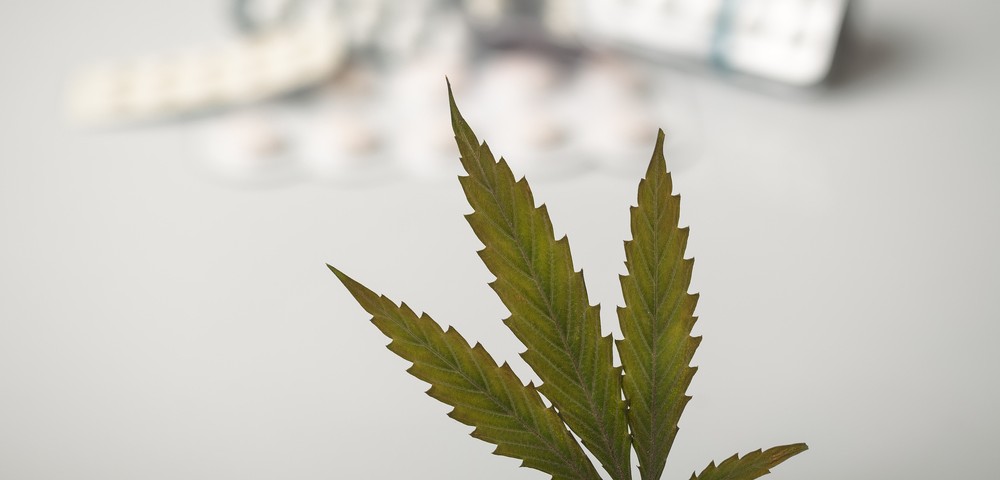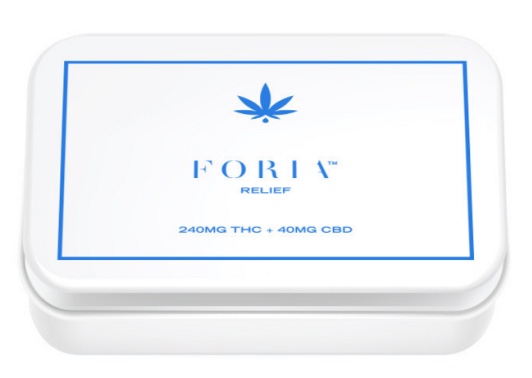Can medical marijuana provide relief to women suffering from pain associated with painful menstrual periods, and with endometriosis, a common gynecological disorder of unknown cause?
FORIA, a startup based in Colorado, where marijuana is legal, maintains that its new cannabis-based product, FORIA Relief capsules, can help ease menstrual pain. While the company makes no claim or representation of FORIA Relief as an endometriosis treatment, it seems logical that pain relief mechanisms cannabis compounds exert on the body would also apply to both menstrual and endometriosis pain. FORIA Relief is currently available to women in Colorado and California, which has liberal medical marijuana regulations, in packs of four capsules for $44.
The manufacturer says FORIA Relief has been formulated and designed to maximize the muscle relaxing and pain relieving properties of cannabinoids without a psychotropic, or high effect, noting that plant medicine has a long, cross-cultural history of use as a natural aid in easing symptoms associated with menstruation, and that the majority of users who apply FORIA topically as designed report very little to no experience of getting high. Each FORIA Relief capsule contains a blend of 60 mg of THC (Tetrahydrocannabinol) and 10 mg of CBD (Cannabidiol) — cannabinoids found in the cannabis plant which are known to relax muscles and release tension and cramping in the body, and believed to activate certain cannabinoid receptors in the pelvic region when introduced via specially formulated suppositories. Through use of suppositories, the antispasmodic and pain relieving properties of cannabinoid compounds are delivered directly to the area in need of relief.
FORIA affirms that its intention is to tap into the powerful medicinal properties of this herb while utilizing modern extraction techniques to standardize purity and potency. The cannabis used in making FORIA Relief is grown outdoors in northern California without use of harmful pesticides and extracted using leading-edge solvent-free pharmaceutical-grade processes that provide extracts in their purest possible form.
The company says feedback from users has reported significant decrease in pain and discomfort associated with menstruation. Science cited by FORIA indicates that cannabinoids directly impact the immune system and the nerve endings of the uterus, cervix, ovaries, and surrounding smooth muscle tissues. THC positively affects the nerves and assists in blocking pain while also allowing more pleasant signals to be received by the brain.
CBD, which is widely believed to have analgesic, antispasmodic, muscle relaxant, anti-anxiety, and anti-inflammatory properties, works in the immune system by suppressing mechanisms responsible for inflammation, and also slows down electrical signalling to muscles, allowing them to relax and reduce cramping.
According to information on The Crohn’s Forum, the human body produces substances called endocannabinoids or endogenous cannabinoids, which function in a similar manner to cannabinoids found in medicinal marijuana. The cannabinoids, those produced within the body or taken from pharmaceutical or medicinal marijuana, exert effects on cannabinoid receptors (CB) in the body that can help relieve symptoms such as cramping.
Cannabinoids can also increase healing of injured epithelial tissues due to stimulation of cannabinoid receptors located in many parts of the body, which produce its own cannabinoids or use cannabinoids from external sources. A 2013 study published in the International Journal of Experimental and Clinical Pharmacology co-authored by Rudolf Schicho, Ph.D., and M. Storr, both of the Institute of Experimental and Clinical Pharmacology, Medical University of Graz in Graz, Austria, observes that over the past decade there have been a steady increase in the number of publications addressing the anti-inflammatory effects of cannabinoids and potential underlying mechanisms, confirming what has been suspected for a long time: that cannabinoids may provide anti-inflammatory effects and symptomatic benefit.
The company emphasizes that information about FORIA Relief’s effects posted on their site is based primarily on patients’ reported experiences and the limited scientific research currently available, and the statements made there regarding this product have not been evaluated by the U.S. FDA, cautioning that the efficacy of the product has not yet been confirmed by clinical or FDA-approved research.
Regarding cannabis as a treatment for endometriosis, the website Medical Marijuana Doctors notes that medical marijuana is unlikely to work in treating endometriosis by itself, and there is no evidence to suggest that medical marijuana can decrease the production of uterine lining to any significant extent.
The website observes that the only use medical marijuana can have in treatment of endometriosis is in pain management, and that numerous studies show medical marijuana does have some varying pain relieving properties that vary by individual, with some people experiencing great relief from pain on medical marijuana and others very little or no improvement. As with all medications, people react in different ways, the website says.
However, Medical Marijuana Doctors observes that it has been shown that risks associated with using medical marijuana are far fewer than those of opiate painkillers, which are addictive and can be lethal when abused, while there is no known risk of death from marijuana overdose or overuse — and not for lack of research. They note that people have been using marijuana for thousands of years and there is not one documented case of a medical emergency resulting from an overdose.
Endometriosis occurs when cells of tissue that normally forms the lining of the uterus — the endometrium — migrates to grow in a location outside of the uterus, most commonly in other organs of the pelvis: the ovaries, vagina, cervix, bladder, bowels, rectum, or the tissue lining the pelvis. These “colonies,” which are not cancerous, are called endometriosis implants, and can cause pain, heavy bleeding, bleeding between periods, and are associated with infertility, although while the disorder is more common in women who are infertile than in fertile women, endometriosis is thought to not necessarily cause infertility. Some researchers think it is an autoimmune disorder. Endometriosis also tends to run in families, so an element of heritability may be in play.
Pelvic pain is the primary endometriosis symptom, with pain in the lower abdomen before and during periods, cramping for a week or two before and during menses, pain during or following sexual intercourse, painful bowel movements, and pelvic or low back pain.
Pain intensity varies, with some women who have a lot of tissue in their pelvis experiencing no pain at all, while some women with milder cases of the disease having severe pain. Women who develop endometriosis may also have gastrointestinal symptoms that mimic irritable bowel syndrome (IBS).
Like uterine cells, endometriosis growths react to ovarian hormones growing and bleeding during menstrual periods, and over time, implants may add more tissue and blood, buildup of which leads to more pain and other symptoms. When endometriosis occurs in the ovaries, cysts called endometriomas may develop, and surrounding tissue may become irritated, eventually developing scar tissue and adhesions.
Conventional treatments for endometriosis may include exercise and relaxation techniques, other the counter or prescription painkillers, hormone therapy, and surgery when severe pain does not respond to less invasive treatments. Surgery can removal of the uterus, fallopian tubes, and both ovaries (a complete hysterectomy), which is suggested to be the best chance for a cure.
For more information about endometriosis, the site medicalmarijuana.com/ has posted a resource at http://medicalmarijuana.com/medical-marijuana-treatments/


